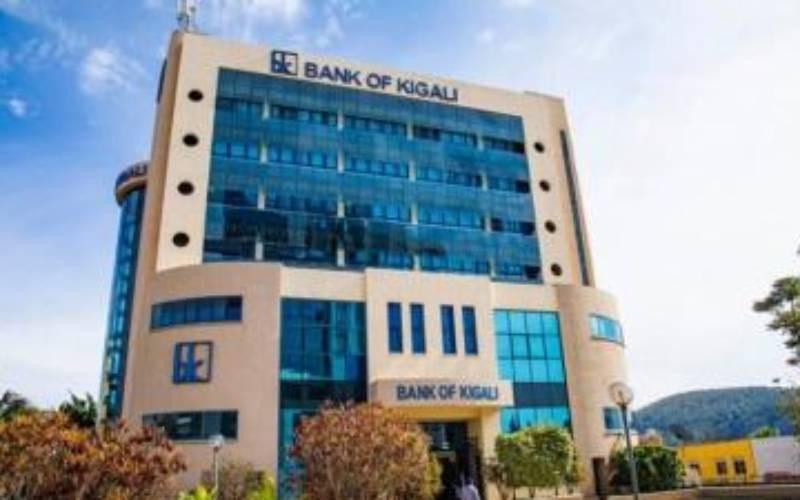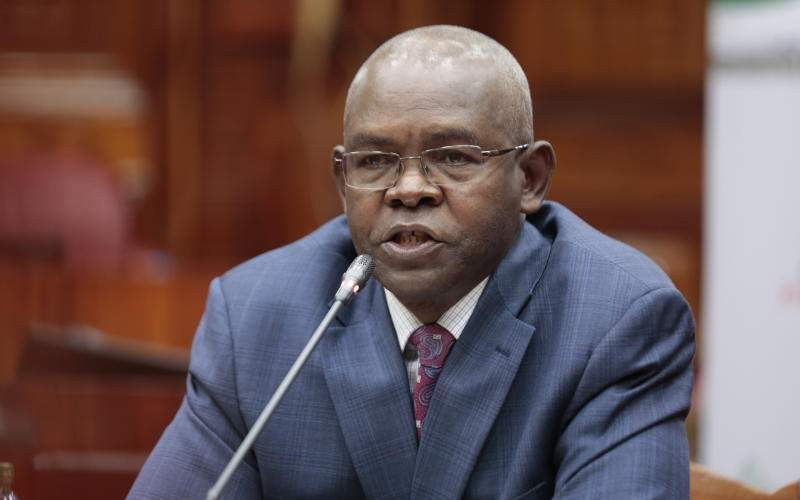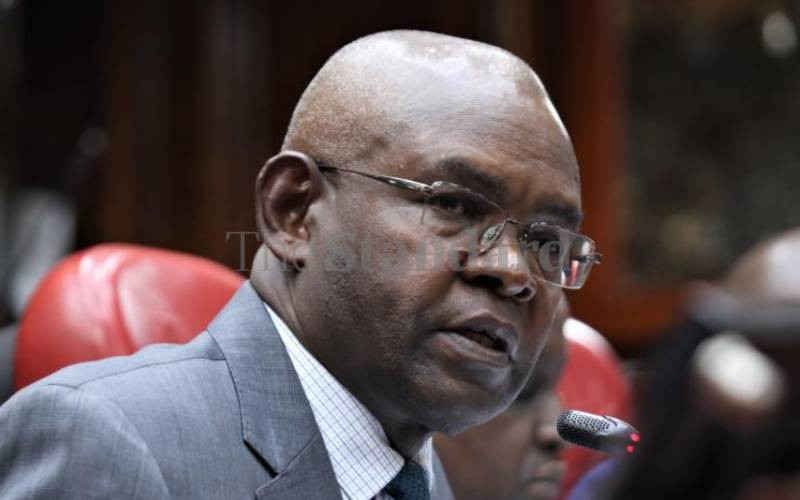
High matatu fares, sky-rocketing rent, rising cost of food. The list of things that give many Kenyans sleepless nights is endless.
But, there is some ‘good’ news for them: The Kenya Shilling (KES) has appreciated significantly against the United States Dollar (USD) and other major currencies this year.
Prominent economic policy-makers, from National Treasury Cabinet Secretary Henry Rotich to Central Bank of Kenya (CBK) Governor Patrick Njoroge, have lauded the strong currency.
Their sentiment is expected because maintaining a sustainable balance of payments is one of the goals in any economy.
Balance of payments gives a summary of all transactions that a country has completed with others, with either a surplus or deficit.
Increased productivity and export of such items as tea, coffee, horticulture and titanium, for instance, means that Kenya gets to earn more in foreign currencies.
On the other hand, importers will dip into a reserve of the foreign currencies to buy such things as cars, clothes, foodstuff and petroleum products from the global market.
More inflows
The trick for economic policy-makers such as Rotich and Njoroge is to ensure, as much as possible, that more foreign currency flows into the economy than out. More inflows mean less pressure on the shilling.
A stronger shilling, as a result of massive reserve of foreign currencies, should enable the country to buy just anything from the global market - Cuban doctors, Chinese steel, American telephones and German cars. And these things should come in cheap.
“We have been having fairly good inflows to support the shilling in terms of balance of payments” says Kenya Bankers Association (KBA) Chief Executive Habil Olaka.
This is after the previous outflows caused by the construction of the Standard Gauge Railway reduced.
Besides income from exports, there has also been a strong inflow from the diaspora in terms of remittances. Head of Research at Sterling Capital Renaldo D’Souza says diaspora remittances had increased to $155 million (Sh15.5 billion) as of June 2018 compared to $26.6 million (Sh2.6 billion) in the same period last year.
There have also been increased financial inflows in terms of both direct investments and portfolio investments such as private equities. As of March, for example, eight deals were completed in Kenya which included private equity, private placement and mergers and acquisitions.
Stay informed. Subscribe to our newsletter
The deals saw foreign investors bring into the economy billions of dollars, a factor that contributed to the strengthening of the shilling.
But the inflows have also included borrowed cash. Mr D’Souza says official reserves of foreign currencies hit an all-time high in March of $9.4 billion following receipt of foreign funds from the $2 billion Eurobond issue.
But has a strong shilling helped reduce the cost of living? The country might as well be said to be grappling with what is fast turning into a paradox of poor Kenyans with a strong shilling.
Generally, Kenya being a net importer - it imports more than it exports - a strong shilling should mean a fairly low cost of living as prices of such critical products and inputs as fuel, mitumba, iron and steel used in the manufacture of several products, fats and oil should all go down.
“A strong shilling makes imports cheaper. So, consuming a product that has import content is cheaper,” says Mr Olaka. And just about everything that Kenyans consume is imported.
Job Wanjohi, the head of policy, research and advocacy at the Kenya Association of Manufacturers (KAM) says the firming of the shilling at an exchange rate of between 98 and 101 against the US dollar in the last six months has cushioned manufacturers from losses occasioned by fluctuation of the exchange rate.
Cushioned from losses
“For instance, manufacturers who import under Duty Remission Scheme for exports to East Africa Community have been cushioned from losses as a result of stable buying and selling of hard currencies, when importing raw materials and exporting finished goods,” he says.
Indeed, companies such as Total and Kenol Kobil that are involved in the importation of petroleum products, a significant input in the production of a lot of consumer products, have gained a lot from a strong shilling.
Total reported a foreign exchange gain of Sh34 million in the first six months of 2018 compared to a loss of Sh109.6 million in a similar period in 2017.
“The foreign exchange gain of Sh34 million is mainly attributable to the stability of the Kenyan shilling against the major currencies compared to a more volatile exchange rate in the first half of 2017,” said Total in a statement accompanying its half-year results.
It was the same with Kenol Kobil, another NSE-listed petroleum dealer. The firm reported a net forex gain of Sh27.2 million in the period under review compared to a loss of Sh25.6 million last year.
However, Wanjohi says, as much as the stability of the shilling has eased production expenses, the gains have been eroded by other costs of production.
“It is impossible to feel the full effect of this stability due to factors such as the cost of power, import declaration fee and the railway development fee.”
He says that while a stronger shilling should enable manufacturers to experience stable wholesale and retail prices, the benefits are distorted by increased costs of production as well as high demurrage from inefficient logistics.
It also seems that the shilling has become stronger at the expense of Kenyans; that the shilling has got fatter by avoiding the pockets of farmers, mama mbogas, boda-boda riders, jua-kali artisans, shopkeepers and other small traders.
“In an ideal environment, when the CBK prints more money to be circulated into the economy, the currency should weaken,” says Johnson Nderi, Corporate Finance and Advisory Manager at ABC Capital.
He says that CBK, which is charged with the mandate of regulating the prices of goods and services in the economy, can print more money by lowering the interest rate. A lower interest rate will nudge commercial banks and other financial institutions into lending more as the cost of credit goes down.
And with increased supply of the shilling in the market, its demand would sag.
“When you deposit one shilling, it can be lent several times,” says Mr Nderi. But this is not happening, with commercial banks unwilling to lend and money supply being constrained due to the interest rate cap.
It is not all that rosy for everyone when the shilling strengthens. A strong shilling may not have been that good for exporters.
Less money
A strong shilling means that traders who sell their products abroad get less money when they convert the foreign currency into shillings. This, in effect, reduces their purchasing power.
“A coffee farmer, for example, will get less for his produce,” explains Olaka.
Indeed, the value of coffee exports declined significantly in the first six months of 2018, dropping by nine per cent in the first half of 2018 to Sh13.8 billion compared with Sh15.2 billion last year, in what some analysts have attributed to a strong shilling.
A strong shilling against other currencies partly explains the increased quantity of imports from Kenya’s neighbouring countries such as Tanzania and Uganda, whose currencies have been on a retreat against the dollar.
On the other hand, exports to the region have taken a beating as a result of a strong shilling, with the Kenyan currency gaining about two percentage points against the dollar to date.
By June, the Ugandan currency had depreciated by 3.6 per cent against the dollar since January while the Tanzanian one weakened by 1.8 per cent against the greenback.
 The Standard Group Plc is a
multi-media organization with investments in media platforms spanning newspaper
print operations, television, radio broadcasting, digital and online services. The
Standard Group is recognized as a leading multi-media house in Kenya with a key
influence in matters of national and international interest.
The Standard Group Plc is a
multi-media organization with investments in media platforms spanning newspaper
print operations, television, radio broadcasting, digital and online services. The
Standard Group is recognized as a leading multi-media house in Kenya with a key
influence in matters of national and international interest.
 The Standard Group Plc is a
multi-media organization with investments in media platforms spanning newspaper
print operations, television, radio broadcasting, digital and online services. The
Standard Group is recognized as a leading multi-media house in Kenya with a key
influence in matters of national and international interest.
The Standard Group Plc is a
multi-media organization with investments in media platforms spanning newspaper
print operations, television, radio broadcasting, digital and online services. The
Standard Group is recognized as a leading multi-media house in Kenya with a key
influence in matters of national and international interest.










